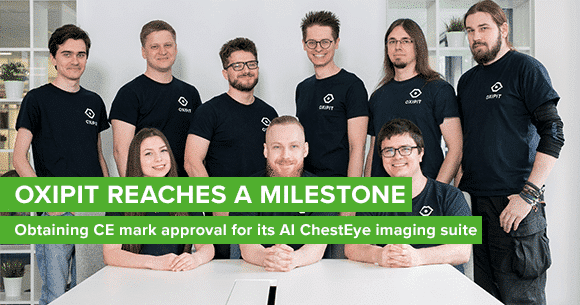Gregor Biswanger: "This is a huge edge Windows has over the competition"
 Gregor Biswanger, Microsoft “MVP” for Client App Dev, works as a solutions architect and XAML expert at impuls Informationsmanagement in Nuremberg, Germany. His expertise lies in the .NET architecture, XAML, and agile processes. He recently published a DVD containing a video on “WPF 4.5 and Silverlight 5” as well as “My First Windows 8 App” from Addison-Wesley at video2brain. Biswanger is also a freelance author, instructor, speaker and Microsoft CLIPler on INdotNET (Ingolstädter .NET Developers Group). In his blog, he shares his experiences, lessons learned, and best practice tips.
Gregor Biswanger, Microsoft “MVP” for Client App Dev, works as a solutions architect and XAML expert at impuls Informationsmanagement in Nuremberg, Germany. His expertise lies in the .NET architecture, XAML, and agile processes. He recently published a DVD containing a video on “WPF 4.5 and Silverlight 5” as well as “My First Windows 8 App” from Addison-Wesley at video2brain. Biswanger is also a freelance author, instructor, speaker and Microsoft CLIPler on INdotNET (Ingolstädter .NET Developers Group). In his blog, he shares his experiences, lessons learned, and best practice tips.
Janina Benz: Gregor, you’ve talked about Windows 8 at many events, and through blog posts and video tutorials. What are the main benefits of the new OS for users and developers?
Gregor Biswanger: Windows 8 runs on all popular devices and thus also the new Windows runtime (WinRT). So it’s possible to deploy Windows store apps on any device. If you’re in the office, you can start by running a business analysis on your PC. In a meeting, you can take your slate and share the same data and the same apps. On the way to catch a train, you can whip out your Windows phone and look at the same information. You can also run through everything again on your TV set when you’re at home (Xbox). So in a nutshell, Windows 8 is about cross-device functionality.
JB: Microsoft launched its new OS with consumer and business versions. What opportunities do you see in Windows 8 for businesses? Why should they also make the switch?
GB: In addition to cross-device functionality and the new home screen, there are some very interesting things for business use. For instance, the Pro version comes with Hyper-V virtualization technology. That’s particularly interesting for administrators, developers, and engineers. For example, it’s better for testing configurations because a Windows 8 PC can be used as a host for guests to run routines on, as a kind of virtual machine. So you don’t need an expensive add-on like VMware Workstation 9.
A highlight with the Enterprise version is the “Windows To Go” function which allows the IT department to set up a pre-configured Windows 8 installation on a USB device. Similar to Windows PE or Linux live DVD, employees can work with a fully fledged Windows version, with secure access to company data via the Internet and Windows 8 features such as direct access. To keep things separate from host functions on the home PC, Windows To Go blocks access to local drives on your computer. For security reasons, if you suddenly remove the USB device, Windows Live is locked. But there are also a number of disadvantages with this feature. For a start, it’s restricted to USB 3.0 devices. It’s also possible to boot your home PC from a memory stick, and that could be a challenge for inexperienced users.
Apart from these features, the high performance of Windows 8 is very attractive.
JB: Sounds very interesting and appealing. Now let’s get a bit more techy. What are the specific benefits and challenges for developers? Did Microsoft think about usability or ease-of-use for developers when designing the OS?
GB: Microsoft expands the target group for developers. So a new runtime was included as a fixed feature in Windows 8 called Windows runtime (WinRT). It allows for a wide range of interfaces. For example, HTML and JavaScript developers can now program their own Windows applications. Even C++ developers have been integrated more closely again, which will obviously be interesting for objective-C developers. But the system also caters more for the familiar community of .NET developers.
The new Microsoft design language provides a guide and a standard in one. So now, developers have a way to access the guide without extensive design knowledge. As a result, the user enjoys high quality across the entire system. On certain fronts, every app does exactly what it’s expected to. This enhances the user experience. Other platforms also have guides, but they don’t offer the same high standard. So again, each app works differently than expected. This is a huge edge Windows has over the competition.
JB: Finally, can you tell us what potential you think Windows 8 has? Given the competition, how successful can this new OS be, and why?
GB: Windows 8 has tremendous potential and offers a high level of usability with its new concepts. The Windows 8 launch was better than Windows 7, with 40 million licenses sold. Despite this, some users are still nervous, holding the classic prejudices. Of course, this is because it’s a completely new user experience. But that’s what most Windows users say the first time they use OSx or Android: “It’s impossible to do anything with it.” It’s just a matter of getting used to it and plugging away at it. And this could still taint the success of Windows 8 somewhat. But as we know from the Windows Phone 7 and the new Windows Phone 8, it sometimes takes time for a new concept to gain momentum. So, Windows 9 will continue down the path taken with Windows 8 and then it’s certain to attract a wider audience. But if you’ve already started working with Windows 8 and use that as a foundation, it’s a safe bet for the future. It’s been more carefully thought through than you first realize. New hardware and hybrid devices, like the DELL XPS 12, will do more and more to highlight the advantages and benefits of cross-device scenarios.
JB: Thank you very much, Gregor. It’s been a pleasure talking to you.





Write a comment